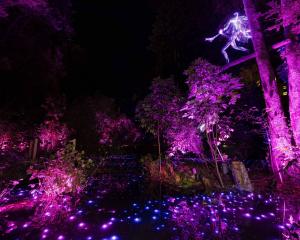
Further initiatives in using movable type followed Gutenberg’s. Civis remembers visiting a newspaper office, as a child in a school group, and seeing type set using a keyboard mechanism, then papier-mache moulds taken from the resulting formes, from which curved lead-alloy casts were taken, to print the newspaper in a rotary press, and then be melted down for reuse (lead poisoning, anyone?).
The communication revolution that Civis has lived through was based on the computer and the internet. A century ago the author of this column wrote, by hand or typewriter, on paper, at times, presumably for reference purposes, doing so in the ODT’s office library. Now Civis writes with a laptop (a tablet if away from home), uses the internet for research beyond home library resources, and emails the result to the ODT, enabling the column to be written even from the other side of the world.

Otago University owns several traditional presses, and movable type for them. In 2003 it established a printer-in-residence programme, which, as well as producing high-quality, limited-edition books, enables students, especially from humanities departments, to see the old printing technology in use.
Civis is fortunate in owning two books recently produced that way.
The university’s 2019 Printer in Residence John Holmes (once Medical Officer of Health for Otago-Southland) designed, hand-set and hand-printed, on beautiful 145gsm Zerkall cream paper, for the university’s Otakau Press, a selection, by Lynn Jenner, of Charles Brasch’s letters to the Otago Daily Times.
The contents are interesting. In 1950, responding to city council plans to build a new wing for the art gallery at Logan Park, Mr Brasch (with others) argued against the proposal, saying it would commit the gallery to its then site at Logan Park. The Logan Park site was "most inaccessible" and "an art gallery is of little value to a community unless its collections can become familiar by constant visits: ideally it should be near the centre of things ... so that both young and old can drop in frequently ..." That was prescient: since 1996 the city gallery has indeed been "near the centre of things", its main entry from the Octagon obvious, easily accessed by citizens and visitors alike.
The other book, also designed, hand set and printed by Dr Holmes, but under his own Frayed Frisket Press imprint, for Dunedin’s Centre for the Book He Rau Kupu, is Tūwhare 100, marking a century since Hone Tūwhare’s birth in 1922 with "recollections and reflections" from 28 contributors.
Two gems from Witi Ihimaera-Smiler come to mind.
Hone phoned him: "My young daughter Jessica answered the phone, his sonorous voice clearly affecting her because when I asked her who it was, she answered: ‘It sounds like God’."
"Later, in 1975, Hone tried to get the Chinese embassy to approve my going to China with him. I sent my passport to them but they sent it back. I was too radical, apparently, so they invited Tama Iti and he went instead."
Each book, identically bound, one by the University Library Bindery, the other by David Steadman at Dutybound, in dark blue cloth-covered boards, with paper label, is a delight to handle and to read.
Long may such outstanding works of art, and centuries-old craft, be published.










